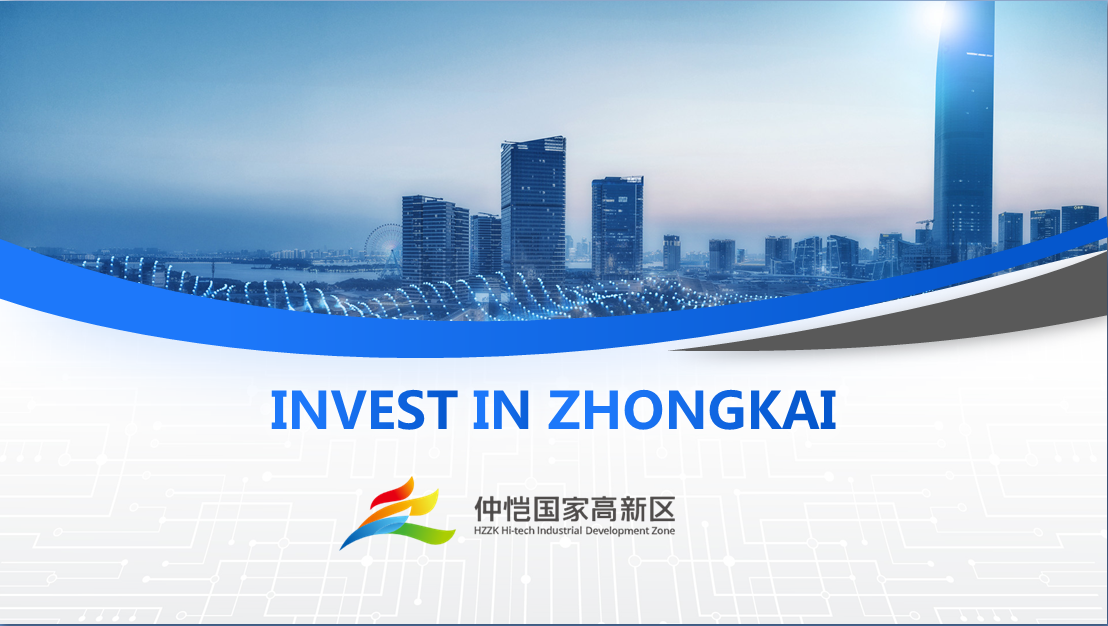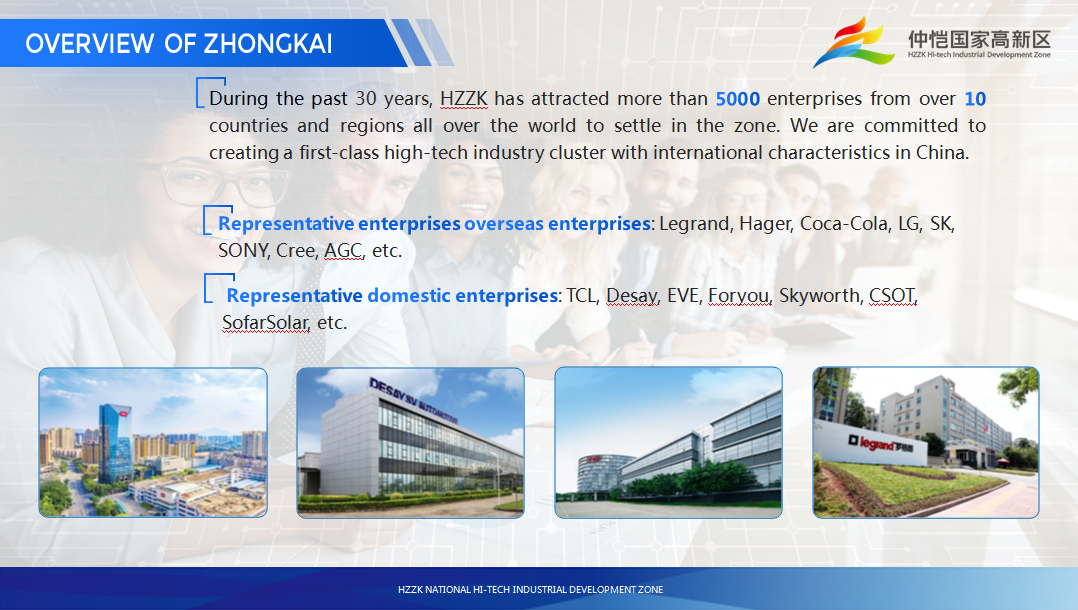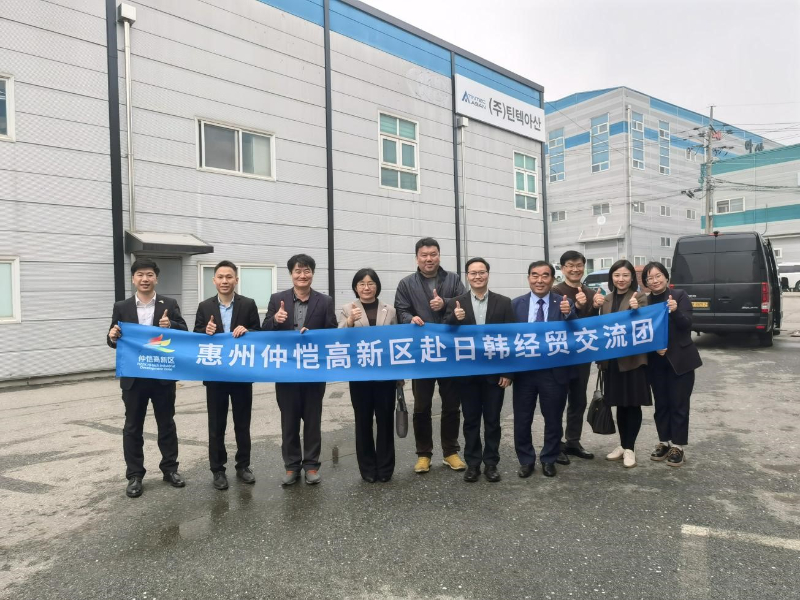One of the first group of National High-tech Industrial Development Zones in China

National High-tech Industrial Development Zones in China act as powerful engines for economic growth and technological progress. These zones have made substantial contributions to the nation's GDP, achieving an impressive CNY 9.52 trillion in 2017. With a strong emphasis on research and development, these zones boast a 7.09% expenditure-to-GDP ratio, exceeding the national average by more than threefold. High-tech companies such as Legrand, Hager, Coca-Cola, LG, SK, SONY, Cree, AGC, TCL, Desay, EVE, Foryou, Skyworth, CSOT, and SofarSol flourish within these zones. These zones are pivotal in driving innovation and enhancing China's standing in the global technology industry.
Historical Context and Establishment
Background of High-tech Zones in China
Economic and political motivations
The establishment of high-tech zones in China stemmed from both economic and political motivations. The Chinese government sought to transform the economy by fostering technological innovation and industrial upgrading. The creation of these zones aimed to attract foreign investment and stimulate domestic technological capabilities. Zhongguancun, established in 1988 in Beijing, served as a model for future zones. The success of Zhongguancun demonstrated the potential of these zones to drive economic growth and technological advancement.
Initial planning and development
The initial planning and development of high-tech zones involved strategic decisions by the Chinese government. Authorities selected locations with strong academic and research institutions to ensure a steady flow of talent and innovation. The government provided incentives such as tax breaks and infrastructure support to attract businesses. The focus on creating a conducive environment for research and development laid the groundwork for the zones' success. The early stages of development emphasized collaboration between industries and academic institutions.
The First Group of Zones
Criteria for selection
The selection of the first group of national high-tech zones followed specific criteria. The government prioritized regions with existing technological capabilities and potential for growth. Proximity to universities and research centers played a crucial role in the selection process. The aim was to create a network of zones that could collectively enhance China's technological landscape. The emphasis on strategic location and resource availability ensured the zones' long-term viability.
Key locations and their significance
Several key locations emerged as significant players in the development of high-tech zones. The Hefei National High-tech Industry Development Zone, approved in 1991, became a hub for innovation in Anhui Province. The Chengdu Hi-tech Industrial Development Zone, established in 1988, contributed to Sichuan Province's technological progress. The Xi'an Hi-tech Industries Development Zone, recognized in 1991, played a pivotal role in Shaanxi Province's economic transformation. These zones exemplified the Chinese Development Zones Approval strategy, showcasing the government's commitment to regional development.
Objectives and Goals
Promoting Technological Innovation
Encouraging Research and Development
National High-tech Industrial Development Zones foster technological innovation by encouraging research and development. The government provides special incentives to attract high-tech industries. These zones concentrate innovation resources, which enhances technological progress. The aggregation of talents and technologies in these zones leads to significant breakthroughs. The efficient allocation of resources supports the development of new technologies. These zones become popular investment destinations due to their focus on innovation.
Collaboration with Academic Institutions
Collaboration with academic institutions plays a crucial role in promoting innovation within National High-tech Industrial Development Zones. These zones often situate near universities and research centers. This proximity facilitates partnerships between industries and academia. Such collaborations lead to the development of cutting-edge technologies. Academic institutions contribute to the zones by providing a steady flow of skilled talent. This collaboration enhances the zones' innovation capabilities.
Economic Growth and Industrial Development
Attracting Foreign Investment
National High-tech Industrial Development Zones play a vital role in attracting foreign investment. These zones offer a conducive environment for investors. The strategic location and resource availability make them attractive. Investors benefit from the zones' advanced infrastructure and supportive policies. The concentration of high-tech industries creates opportunities for international collaboration. Foreign investment contributes significantly to the economic growth of these zones.
Supporting Local Enterprises
Supporting local enterprises is a key objective of National High-tech Industrial Development Zones. These zones provide a platform for local businesses to thrive. The zones facilitate industrial competition and cooperation among local enterprises. Local businesses benefit from the zones' focus on innovation and development. The zones enhance the development level of science and technology parks. This support leads to the growth of local enterprises and contributes to regional economic development.
Impact and Achievements

Technological Advancements
Breakthroughs and Innovations
National High-tech Industrial Development Zones (NHTDZs) have become epicenters of technological breakthroughs. These zones foster an environment that encourages cutting-edge research and development. The concentration of high-tech companies within these zones accelerates the pace of innovation. Companies like TCL and Yiwei Lithium Energy have pioneered advancements in electronic information technologies. The focus on research and development has led to significant technological progress. NHTDZs have contributed to reducing energy consumption and CO2 emissions. This achievement aligns with the global push for sustainable development.
Contributions to Global Tech Industry
The impact of NHTDZs extends beyond national borders. These zones play a crucial role in enhancing China's standing in the global technology industry. The innovations emerging from these zones influence international markets. Companies within NHTDZs contribute to the global supply chain of electronic products. The zones' emphasis on green low-carbon development resonates with global sustainability goals. The technological advancements from these zones support the global transition to cleaner energy solutions. NHTDZs have positioned China as a leader in the global tech industry.
Economic Contributions
Job Creation and Economic Output
NHTDZs significantly boost economic output through job creation. The establishment of these zones attracts a diverse range of industries. The influx of companies leads to increased employment opportunities. The zones contribute to regional economic growth by generating substantial economic output. The presence of high-tech industries stimulates local economies. The economic activities within these zones enhance the overall GDP of the regions. The zones' focus on innovation drives productivity and economic performance.
Influence on Regional Development
NHTDZs play a pivotal role in regional development. The zones act as catalysts for economic transformation in their respective regions. The strategic location of these zones facilitates regional connectivity. The development of infrastructure within these zones supports regional growth. NHTDZs promote industrial upgrading and diversification in their regions. The zones' emphasis on green technologies aligns with regional sustainability goals. The integration of human capital and industrial structure improvement drives regional transformation. NHTDZs contribute to a balanced and sustainable regional development landscape.
Role of Key Companies and Urban Innovation

Contributions of Major Corporations
Legrand, Hager, Coca-Cola, LG, SK, SONY, Cree, AGC, TCL, Desay, EVE, Foryou, Skyworth, CSOT, SofarSol play a significant role in the success of High-Tech Industrial Development Zones (HIDZs) in China. These corporations drive technological advancement and economic growth within these zones. The presence of such global giants enhances the innovation output and fosters a competitive environment. Each company contributes unique expertise and resources to the development zones. For instance, TCL and Skyworth lead in electronic information technologies, while LG and SONY focus on consumer electronics. The collaboration among these corporations promotes urban innovation development and strengthens the quality of urban innovation.
The HIDZ policy encourages these companies to invest in research and development. This investment leads to breakthroughs in various sectors, including green technologies and sustainable practices. Legrand, Hager, Coca-Cola, LG, SK, SONY, Cree, AGC, TCL, Desay, EVE, Foryou, Skyworth, CSOT, SofarSol contribute to the urban innovation output by integrating advanced technologies into their operations. The synergy between these corporations and the HIDZs results in a dynamic ecosystem that supports urban innovation quality. The collective efforts of these companies enhance the overall quality of urban innovation within the zones.
Urban Innovation
Integration of Technology in Urban Planning
High-Tech Industrial Development Zones foster urban innovation by integrating technology into urban planning. The HIDZ policy emphasizes the use of cutting-edge technologies to improve urban infrastructure. Smart city solutions, such as intelligent transportation systems and energy-efficient buildings, are implemented within these zones. The development zones foster urban innovation by creating a conducive environment for technological advancements. The integration of technology enhances the quality of urban innovation and promotes sustainable urban growth.
Cities within HIDZs benefit from the implementation of innovative urban planning strategies. The focus on technology-driven solutions improves the efficiency and livability of urban areas. The HIDZ policy supports the adoption of smart technologies, which leads to improved urban innovation output. The emphasis on technological integration aligns with the global trend towards smart cities. The development zones foster urban innovation by promoting urban innovation quality and enhancing the overall urban experience.
Enhancing Quality of Life Through Innovation
Urban innovation in HIDZs significantly enhances the quality of life for residents. The focus on innovation leads to the development of sustainable and efficient urban environments. The HIDZ policy prioritizes projects that improve urban living conditions. Initiatives such as renewable energy solutions and waste management systems contribute to a cleaner and healthier environment. The commitment to innovation results in improved urban innovation quality and a higher standard of living.
The development zones foster urban innovation by encouraging the implementation of innovative solutions that address urban challenges. The collaboration between corporations and local governments drives the development of smart city initiatives. The emphasis on urban innovation development leads to increased urban innovation output and improved quality of urban innovation. The HIDZ policy supports projects that enhance the urban experience and promote sustainable urban growth. The focus on innovation ensures that cities within HIDZs remain at the forefront of urban development.
Challenges and Future Prospects
Current Challenges
Competition and Market Saturation
China's National High-tech Industrial Development Zones face intense competition. Many cities now host similar zones. This leads to market saturation. Companies struggle to differentiate themselves. Innovation becomes crucial for survival. The pressure to stand out grows. Businesses must continuously innovate. The rapid pace of technological change adds complexity. Companies need to adapt quickly. Failure to do so results in loss of market share.
Policy and Regulatory Hurdles
Regulatory challenges present significant obstacles. China's legal framework requires compliance with strict laws. The National Intelligence Law mandates support for state intelligence. Businesses must navigate these requirements carefully. Intellectual property (IP) protection remains a concern. Written contracts must comply with Chinese law. The official red stamp is essential. Local legal expertise becomes invaluable. Specific IP court divisions handle disputes. The UK Bribery Act influences business practices. Companies must avoid improper activities. Due diligence on local partners is necessary.
Future Directions
Expansion and Modernization Plans
Expansion plans focus on modernization. China aims to enhance its high-tech zones. Investment in infrastructure is a priority. Urban areas benefit from these developments. Smart city solutions improve urban living. Technology integration transforms cities. Energy-efficient buildings become standard. Intelligent transportation systems enhance mobility. Urban innovation drives growth. Cities evolve into tech hubs. The focus on sustainability increases. Green technologies gain prominence.
Potential for International Collaboration
International collaboration offers new opportunities. China's high-tech zones seek global partnerships. Collaboration enhances innovation capabilities. Foreign companies bring expertise. Joint ventures drive technological advancements. Knowledge exchange fosters growth. Global markets open up for Chinese firms. Partnerships strengthen China's position. The emphasis on innovation attracts foreign investment. Collaborative projects boost urban development. Cities become centers of global innovation. The future holds promise for China's high-tech zones.
National High-tech Industrial Development Zones (HIDZs) have significantly impacted China's economic and technological landscape. These zones have driven innovation and economic growth for over 30 years. The HIDZ policy has promoted Urban Innovation by integrating technology into urban planning. This integration enhances the quality of life in urban areas. Google Scholar highlights the positive influence of the HIDZ policy on Urban Innovation, especially in underdeveloped regions. However, challenges persist, such as low innovation efficiency and uneven development. Despite these challenges, HIDZs remain crucial for China's future technological advancements.
See Also
Exploring the Ascendancy of Zhongkai High-tech Zone in Industry Growth
Top High-tech Zone of 2024: Zhongkai's Industrial Excellence
Progression of Zhongkai High-tech Zone: Leading Electronic Information Sector
Emergence of Zhongkai High-tech Zone: Flourishing Electronic Info Hub
Understanding Huizhou's Zhongkai High-tech Zone: Propelling China's Tech Sector
Zhongkai High tech Zone National foreign trade transformation and Upgradi Base(Electronic Information)Cloud Platform.
Address: Zhongkai High-tech Zone,Huizhou City ,Guangdong,China
E-mail: huizhoueii@163.com 13510001271@163.com
Tel: +86-0752-3279220 Mobile: +86-13510001271


